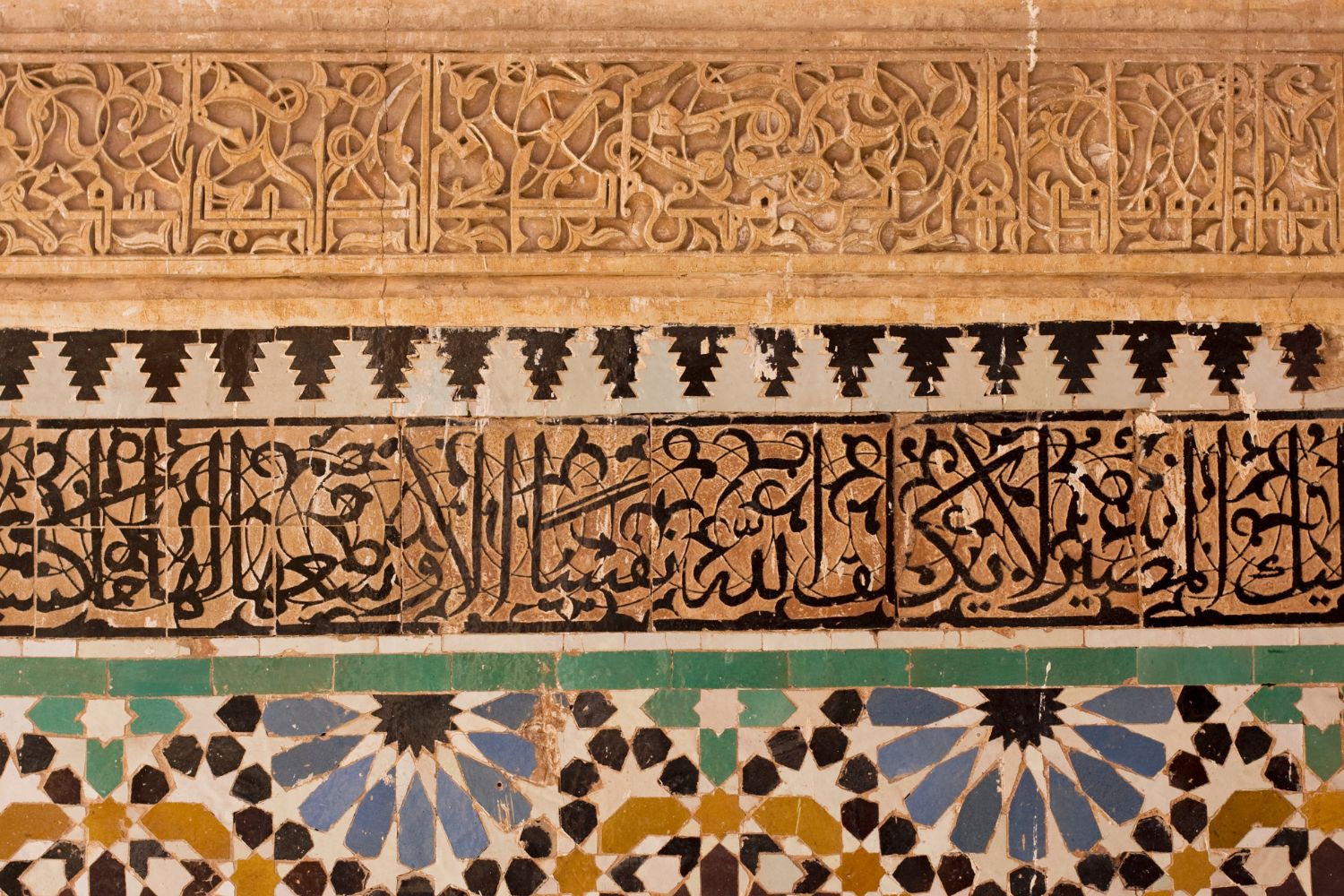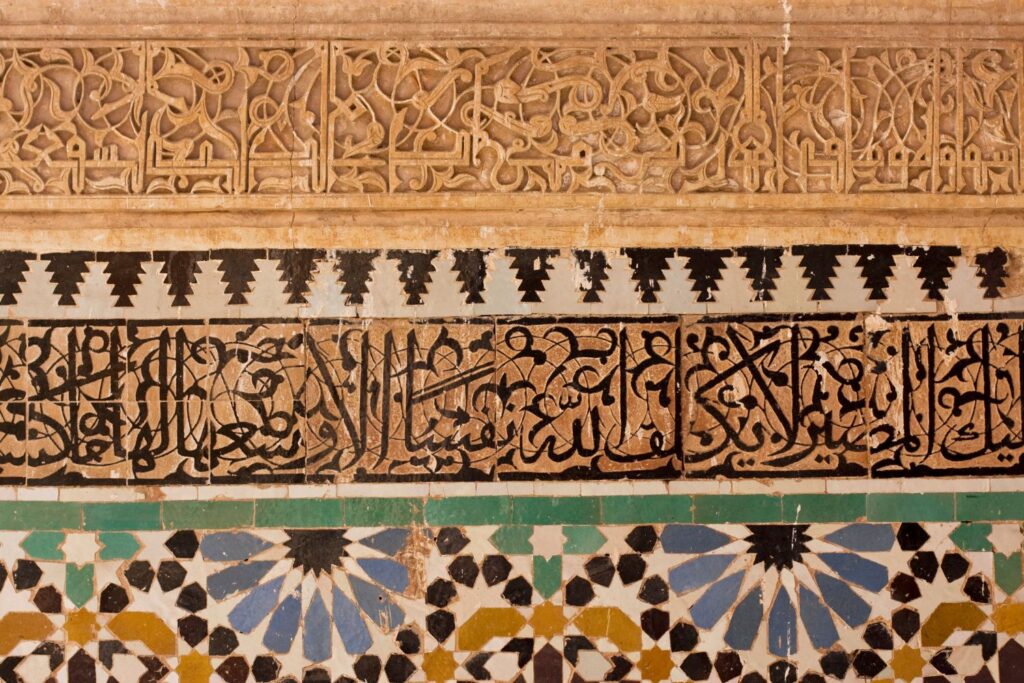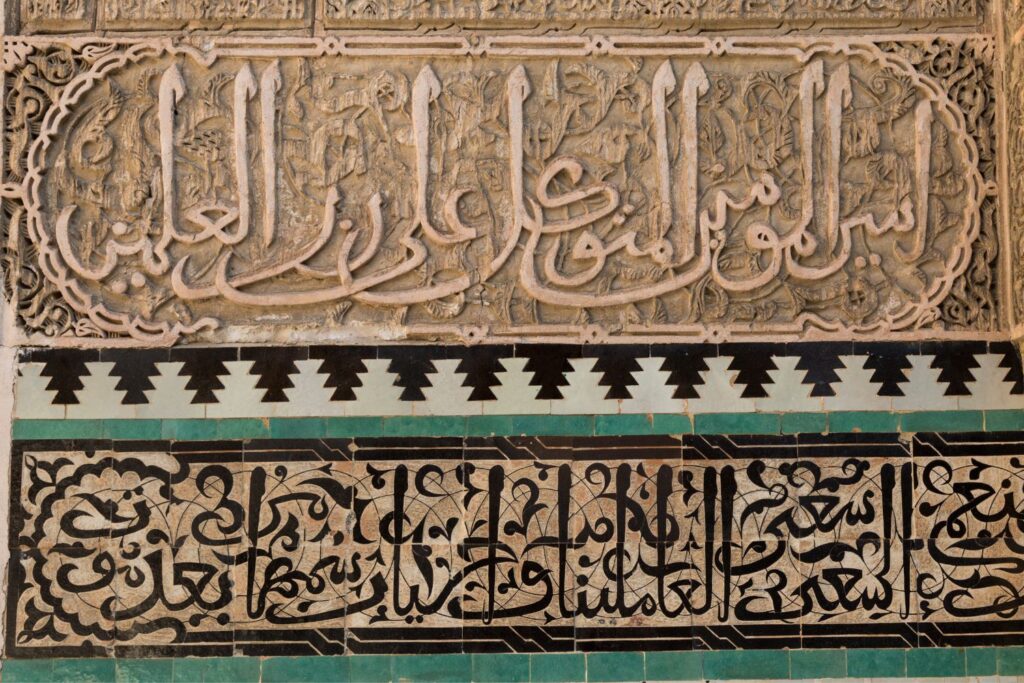Table of Contents
Moroccan Islamic Calligraphy
Moroccan Islamic calligraphy embodies a dance of ink and imagination, weaving the rich tapestry of Islamic heritage. As you walk through the vibrant streets of Morocco, every stroke of the pen tells a story, transcending mere art to become a conversation across time. This intricate calligraphy isn’t just about creating patterns on paper; it’s about capturing the heartbeat of a culture that has been pulsing through centuries.
A Journey Through Time:
- Early Whispers: Picture the first brushstrokes of Moroccan calligraphy, born in the cradle of early Islam. Influenced by the Middle East’s Kufic scripts, these lines were more than writing; they were the first whispers of a cultural revolution.
- The Marinid Masterpiece: Fast forward to the 14th century, under the Marinid dynasty’s watchful eyes. This was the renaissance of Moroccan calligraphy – a time when every line, dot, and curve was a rebellion of beauty against the blank canvas of mosques, madrasas, and palaces.
- The Echo in Modernity: Now, we see calligraphy evolving, like a tree growing new branches while rooted in tradition. Contemporary Moroccan artists are painting stories that merge yesterday and today, a dialogue between the old soul and the new world.
The Characters of the Tale:
- Kufic: The Ancestral Voice – Imagine the Kufic script as the wise elder of the family, its angular, geometric forms speaking the language of history.
- Maghribi: The Moroccan Heartbeat – Here comes Maghribi, the script born and raised in the Maghreb. Its rounded characters and ornamental flair are like Morocco’s own signature, distinct and full of life.
- Contemporary Fusion: The New Frontier – Today’s artists are adventurers, blending the timeless art of calligraphy with the abstract, painting the future while honoring the past.
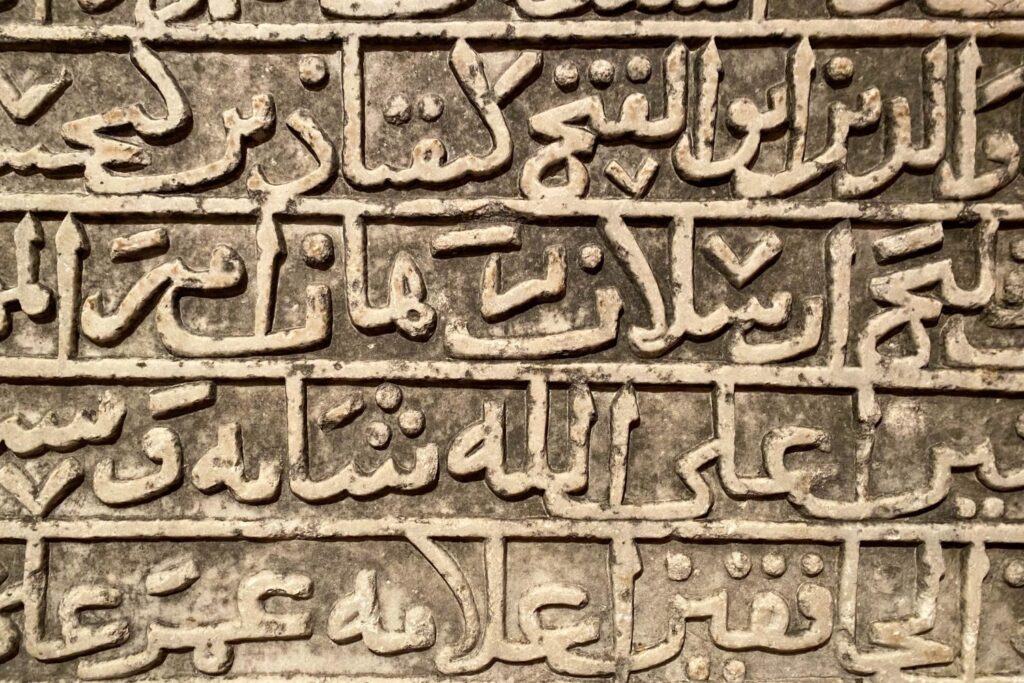
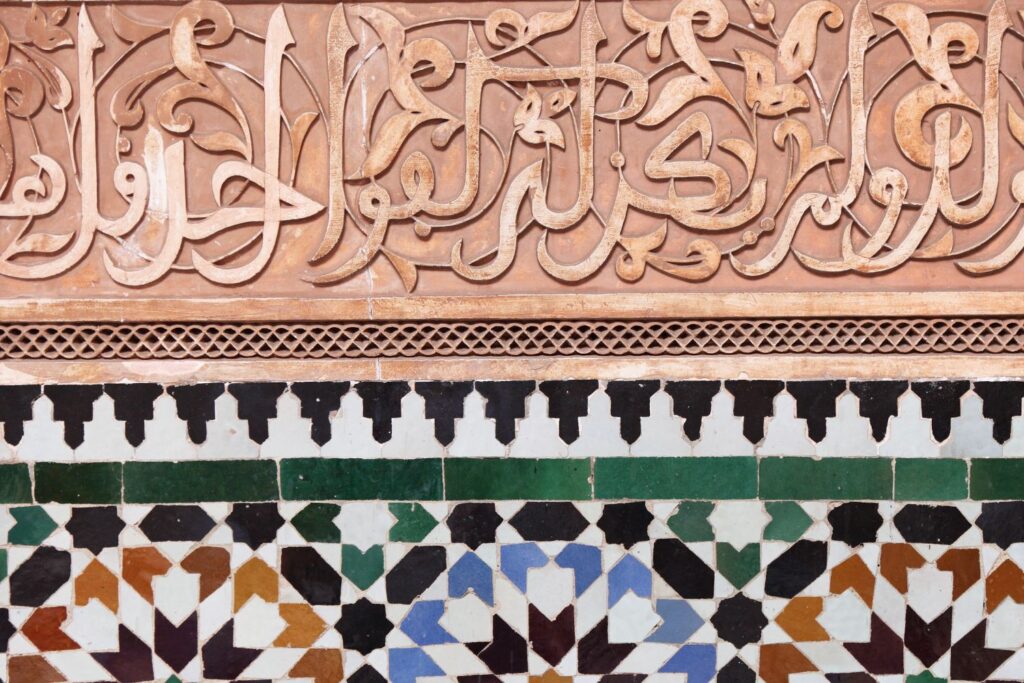
The Soul of the Story:
- More Than Words: In calligraphy, every curve is a verse from the Quran, a sacred hymn echoing through time.
- Identity’s Ink: This art is Morocco’s fingerprint, a visual echo of its Islamic roots and intellectual richness.
- Lessons in Lines: Calligraphy isn’t just practiced; it’s passed down like a family heirloom, taught in schools and workshops, a legacy kept alive in each new generation.
Facing the Future:
- Digital Dilemmas: The digital age is a double-edged sword – a challenge to tradition, yet a window to the world.
- Guardians of the Art: Picture festivals, exhibitions, and educational programs, all part of a grand effort to keep the art of calligraphy vibrant and visible.
In Conclusion:
Moroccan calligraphy is more than ink on paper; it’s a living, breathing story. As it embraces the future, it remains a testament to Morocco’s soul, a bridge between the whispers of the past and the conversations of the future.
Impact on Other Art Forms:
- Influence on Moroccan Crafts: Exploring how calligraphic motifs have influenced other Moroccan art forms like ceramics, textile design, and metalwork.
- Integration in Contemporary Art: Examining how contemporary Moroccan artists incorporate calligraphic elements into various art forms, such as painting, sculpture, and digital art.
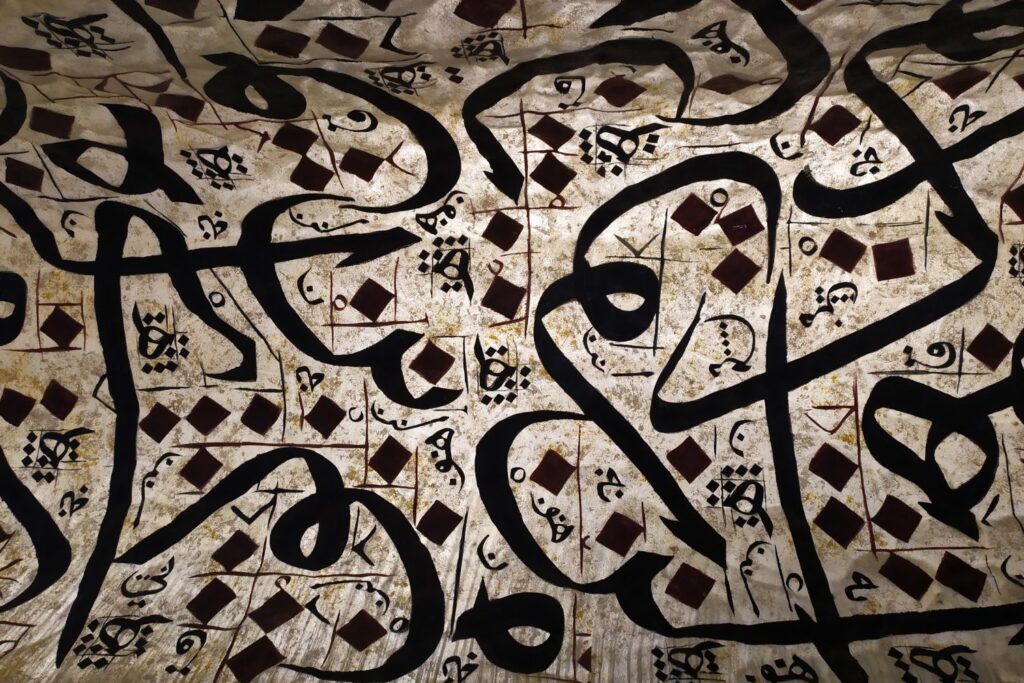
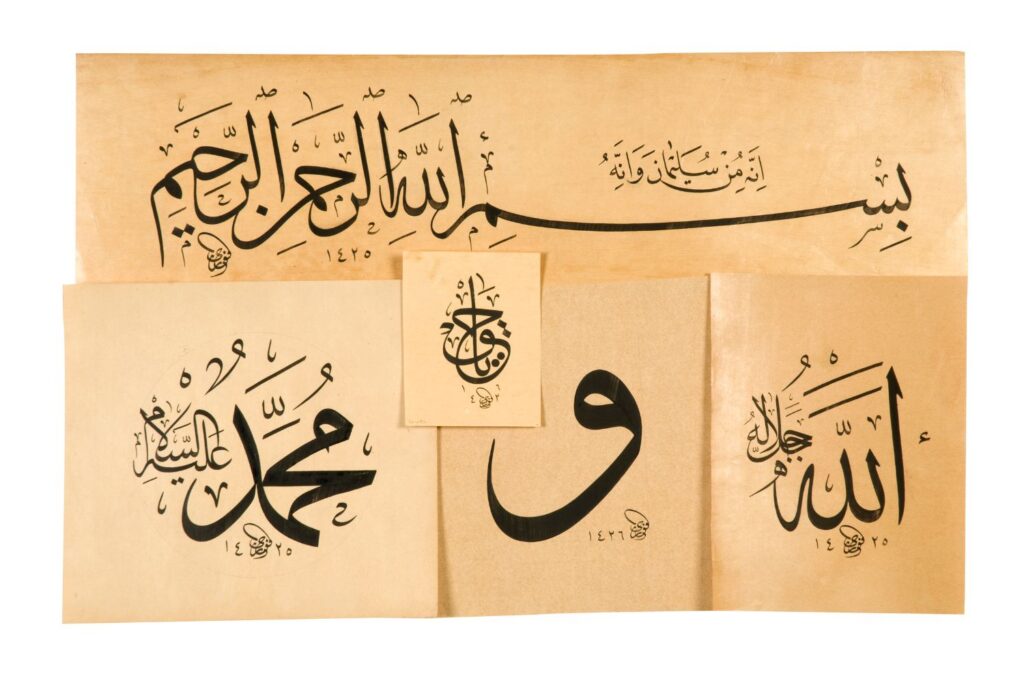
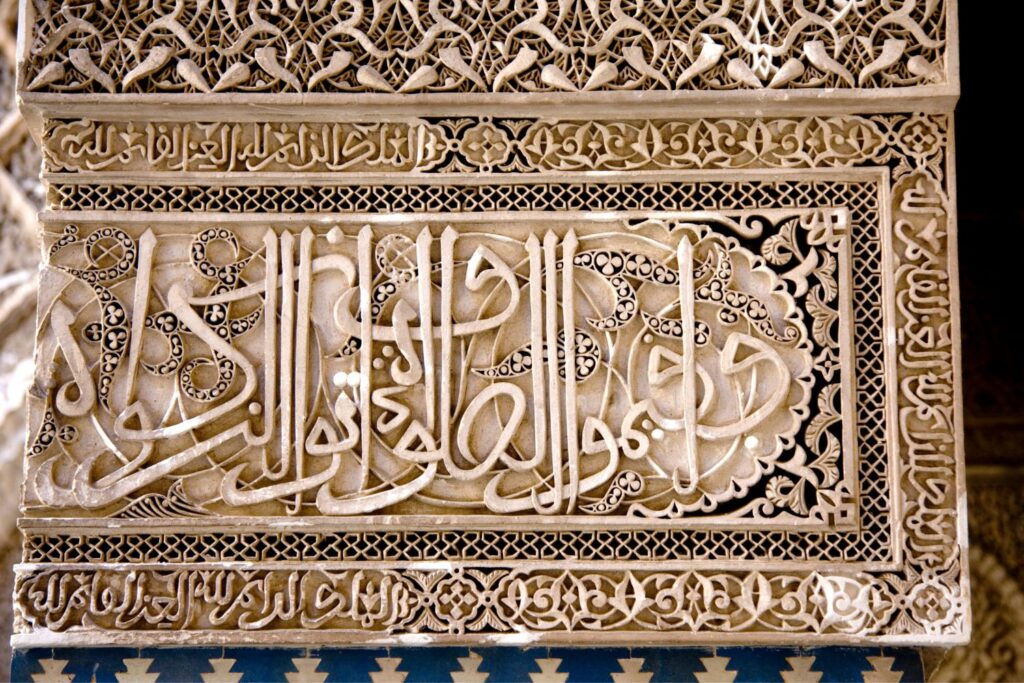
Personal Narratives:
- Master Calligraphers’ Stories: Sharing stories and interviews with renowned Moroccan calligraphers, offering insights into their artistic journey, inspiration, and their role in preserving this heritage.
- Community Involvement: Discuss how local communities engage with calligraphy, from street art to educational programs, reflecting the art’s deep roots in Moroccan society.
The Future of Moroccan Calligraphy:
- Digital Revival: How technology is being used to revive and reinvent calligraphy for the digital age, including digital calligraphy tools and platforms.
- Global Collaborations: Highlighting collaborative projects between Moroccan calligraphers and international artists or institutions, fostering cross-cultural exchange and innovation.
As we look toward the future, Moroccan calligraphy remains a vibrant and evolving art form, deeply ingrained in the country’s cultural fabric. Its ability to adapt while preserving its essence is a testament to its enduring appeal and significance. This artistic legacy, with its rich history and contemporary relevance, continues to captivate and inspire both within Morocco and across the globe.
